Imagine a world where empires crumble not with a bang, but with the silent tread of opportunistic boots. On October 19, 439 AD, the ancient city of Carthage, once the scourge of Rome during the Punic Wars, fell not to a grand army of legions but to a band of Germanic wanderers known as the Vandals. Led by the cunning King Genseric, this event marked a turning point in the twilight of the Western Roman Empire, reshaping the Mediterranean’s power dynamics and accelerating the fall of one of history’s greatest civilizations. But beyond the dust of ancient battles, this story pulses with lessons of adaptability, strategic patience, and bold action—principles that can transform your everyday challenges into triumphs. In this deep dive, we’ll explore the intricate historical tapestry of the Vandal conquest, packed with fascinating details from migrations across continents to naval dominations, before distilling it into motivational gold for modern life.
To set the stage, let’s travel back to the early 5th century AD, a time when the Roman Empire was fracturing under its own weight. The Western half, ruled from Ravenna, grappled with internal strife, barbarian incursions, and economic woes. North Africa, particularly the province centered around Carthage, was the empire’s breadbasket, supplying grain to feed Rome’s masses. Carthage itself had risen from the ashes of its destruction in 146 BC during the Third Punic War, rebuilt by Julius Caesar and Augustus into a thriving metropolis. By the 5th century, it was the third-largest city in the empire, boasting grand harbors, aqueducts, theaters, and a population of hundreds of thousands. Its walls, fortified over centuries, seemed impregnable, a symbol of Roman resilience.
Enter the Vandals, a Germanic tribe whose name would become synonymous with destruction—though, as we’ll see, their legacy is far more nuanced. Originating from the regions around modern-day Poland and Scandinavia, the Vandals were part of the great Migration Period (Völkerwanderung), pushed westward by Hunnic pressures and drawn by the allure of Roman wealth. Around 400 AD, they were settled in Pannonia (present-day Hungary), but conflicts with other tribes and the Romans forced them onward. In 406 AD, under King Godigisel, they crossed the frozen Rhine River into Gaul alongside the Alans and Suebi, marking one of the most infamous barbarian invasions. This crossing was no mere raid; it was a desperate migration of entire peoples—men, women, children, and livestock—fleeing scarcity and seeking fertile lands.
The battle at the Rhine was brutal. The Franks, Roman allies, ambushed the Vandals, slaying Godigisel and nearly 20,000 warriors. But the tide turned with Alan reinforcements, allowing the survivors to push into Gaul. Under Godigisel’s son, Gunderic, the Vandals ravaged the region for three years, sacking cities like Mainz and Trier. Their path was marked by fire and plunder, but it was survival-driven rather than mindless. By 409 AD, they crossed the Pyrenees into Hispania (Spain), where they divided the land: the Siling Vandals took Baetica (Andalusia), while the Hasding Vandals and Alans settled in Gallaecia (Galicia) and Lusitania.
Hispania proved no paradise. Constant warfare with Roman forces, Visigoths, and Suebi decimated their numbers. The Siling Vandals were almost wiped out by Visigothic attacks in 418 AD, ordered by the Roman general Constantius III. The survivors united under Gunderic, who led them southward. Gunderic’s death in 428 AD elevated his half-brother Genseric to kingship. Genseric, born around 389 AD, was a lame but brilliant strategist, often described by contemporaries like Procopius as shrewd and fearless. Standing at about 5 feet tall with a limp from a horse fall, he compensated with intellect, forging alliances and inspiring loyalty.
In May 429 AD, Genseric made his boldest move: crossing the Strait of Gibraltar into Roman Africa. Estimates suggest 80,000 Vandals and Alans made the journey, including 15,000-20,000 warriors. The invitation from Count Bonifacius, a Roman general in Africa feuding with the imperial court, is debated—some sources like Prosper of Aquitaine claim Bonifacius provided ships to counter his rival Aetius, only to regret it. Others, like Jordanes, suggest it was uninvited. Landing near Tingis (Tangier), the Vandals marched eastward, defeating Bonifacius at Calama and besieging Hippo Regius in May 430 AD.
Hippo Regius, a coastal city in Numidia, was home to Saint Augustine, the famed theologian whose “Confessions” and “City of God” would influence Christianity for millennia. Augustine died during the 14-month siege on August 28, 430 AD, at age 75, as the Vandals starved the city. Though the siege failed due to disease and Roman reinforcements under Aspar, it showcased Genseric’s tenacity. In 435 AD, a treaty with Emperor Valentinian III ceded most of Africa to the Vandals, retaining Carthage for Rome. Genseric used this peace to consolidate, building a fleet from captured Roman ships.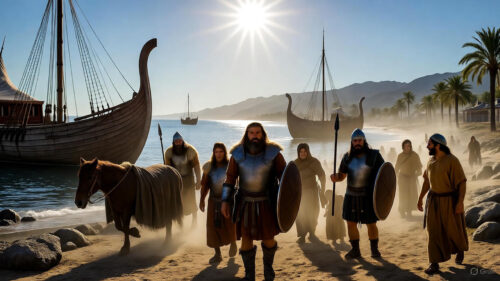
The Vandals’ background reveals a people shaped by adversity. As East Germanic speakers, they practiced Arian Christianity, viewing Jesus as subordinate to God, which clashed with Roman Nicene orthodoxy. Their alliance with the Alans, Iranian nomads skilled in cavalry, added horsepower—literally—to their infantry-based tactics. In Spain, they adopted Roman administrative practices, minting coins and intermarrying with locals. Genseric’s leadership emphasized mobility; his forces were light-armed, relying on surprise and raids rather than heavy sieges.
The invasion of Africa was methodical. After landing, the Vandals swept through Mauretania and Numidia, capturing cities like Icosium (Algiers) and Cirta (Constantine). Roman resistance crumbled; Bonifacius’s mixed army of Romans, Goths, and Moors was routed. By 430 AD, only Carthage, Hippo, and Cirta held out. The siege of Hippo was grueling—Vandals cut supply lines, but plague ravaged both sides. Augustine’s final days were spent praying for the city’s deliverance, penning anti-Donatist works amid the chaos.
The 435 treaty, the Truce of Hippo, granted the Vandals foederati status, allowing them to settle as allies. Genseric received Mauretania and western Numidia, making Hippo his capital. But peace was fragile. Valentinian III’s court was rife with intrigue; his mother Galla Placidia and general Aetius pulled strings. Genseric, sensing weakness, bided his time, strengthening his navy. By 439 AD, the Vandals had a fleet capable of challenging Roman maritime supremacy.
On October 19, 439 AD, Genseric struck. Sources like Victor of Vita describe it as a surprise attack—possibly bribing a guard to open the gates, as per some accounts. Carthage’s defenses, while strong, were undermanned; many Romans were attending games or markets. The Vandals poured in, meeting little resistance. Looting ensued, but Genseric restrained excesses against civilians, focusing on wealth and ships. Churches were seized for Arian worship, and Roman elites were exiled or enslaved.
The capture’s significance was immense. Carthage’s loss cut Rome’s grain supply, causing famines and economic collapse. Genseric proclaimed himself “King of the Vandals and Alans,” dating his reign from this day. He transformed Carthage into a naval powerhouse, raiding Sicily, Sardinia, and Italy. His fleet, numbering hundreds of vessels, dominated the western Mediterranean for decades.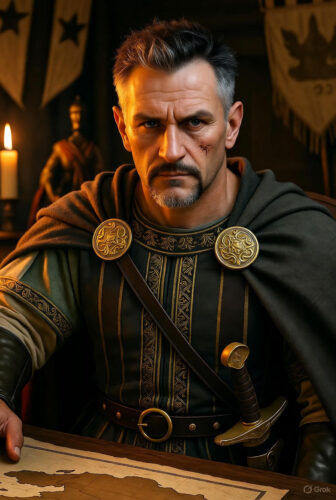
Delving deeper into the migration, the Vandals’ journey from the Danube to Africa spanned over three decades of relentless movement. Starting in Pannonia, they were part of the Roman foederati system, fighting for the empire against other barbarians. But betrayals, like the Roman failure to provide promised lands, fueled their wanderlust. The 406 Rhine crossing was opportunistic—the river froze, allowing passage amid Roman distractions with Radagaisus’s invasion of Italy.
In Gaul, the Vandals allied with the Alans under King Respendial, who saved them from Frankish annihilation. Their sacking of cities was systematic; they targeted treasuries and food stores, avoiding unnecessary slaughter to preserve labor. By 409, entering Spain via the Pass of Roncesvalles, they negotiated with Roman usurper Gerontius for settlement. The division: Siling in Baetica, Hasding in Gallaecia, Alans in Lusitania.
Roman counterattacks under Constantius III in 411-418 AD devastated them. The Visigoths, as Roman proxies, crushed the Silings at the Battle of the Nervasos Mountains in 418 AD, killing their king Fredbal. The Alans, led by Addac, sought Vandal protection, merging under Gunderic. This fusion created a hybrid force: Vandal infantry with Alan horsemen, enhancing mobility.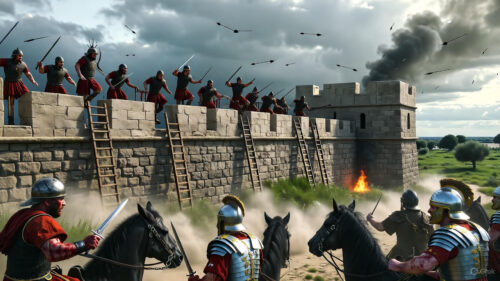
Gunderic’s raids on the Suebi and Romans culminated in capturing Hispalis (Seville) in 428 AD. His death—possibly divine retribution for sacking a church, per Hydatius—paved the way for Genseric. Genseric’s crossing to Africa involved logistical feats: transporting 80,000 people across 14 miles of sea, likely in multiple waves using captured vessels.
In Africa, the conquest was swift but brutal. Victor of Vita recounts Vandal persecutions of Nicene Christians, though exaggerated for propaganda. Genseric expropriated estates from Roman senators, redistributing to his warriors. The Moors, Berber tribes, alternately allied or fought the Vandals, providing auxiliary forces.
The siege of Hippo was a stalemate. Aspar’s relief force from Constantinople arrived in 431 AD, but joint Roman attacks failed. The treaty followed, but Genseric violated it when Valentinian focused on Gaul’s Visigoths.
The capture itself: October 19 coincided with no major festival, aiding surprise. Genseric’s spies likely infiltrated Carthage. Once inside, Vandals secured the harbors, capturing the Roman fleet intact—a game-changer.
Consequences rippled far. In 442 AD, a new treaty recognized Vandal control over Proconsularis, Byzacena, and Tripolitania. Genseric betrothed his son Huneric to Valentinian’s daughter Eudocia, forging ties. But after Valentinian’s 455 AD assassination, Genseric sailed to Rome, sacking it for 14 days. He looted treasures, including the Temple menorah from Jerusalem, and captured Empress Licinia Eudoxia and her daughters.
The Vandal Kingdom flourished. Carthage became a cultural blend: Roman baths and theaters coexisted with Arian churches. Mosaics from Bordj Djedid depict Vandal cavalry, showing continued prosperity. Trade with Byzantium persisted, despite raids. Genseric’s navy repelled Byzantine expeditions in 460 and 468 AD, the latter a massive failure costing 100,000 lives.
The kingdom’s economy thrived on agriculture and piracy. Vandals minted silver coins imitating Roman designs, fostering stability. Religious tensions simmered; Genseric persecuted Nicenes but tolerated Jews. His successors—Hunneric, Gunthamund, Thrasamund—varied in tolerance, with Thrasamund marrying Amalafrida, sister of Ostrogothic king Theodoric.
Decline came under Hilderic (523-530 AD), a pro-Byzantine ruler whose Catholic leanings alienated Arian elites. Gelimer’s coup in 530 AD prompted Byzantine intervention. In 533 AD, Belisarius reconquered Africa in the Vandalic War, ending the kingdom at Tricamarum. Vandals were enslaved or integrated, their name enduring as “vandalism.”
This event’s broader context: it exemplified the empire’s vulnerability. Losing Africa starved Rome, contributing to Odoacer’s 476 AD deposition of Romulus Augustulus. It highlighted barbarian adaptability—Vandals evolved from landlubbers to sea powers.
Fun fact: The term “vandalism” stems from Abbé Henri Grégoire’s 1794 description of French Revolutionary destruction, likening it to Vandal sacks. Yet, archaeological evidence shows Vandal Carthage prospered, with continued building and art.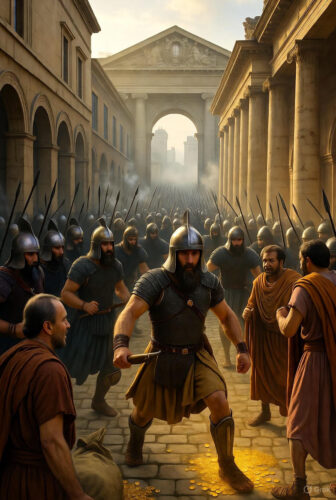
Another intriguing detail: The Alans’ Iranian heritage introduced steppe tactics, like feigned retreats, to Vandal warfare. Genseric’s limp didn’t hinder; he led from horseback, inspiring tales of invincibility.
The sack of Rome in 455 AD was methodical, not wanton. Genseric honored Pope Leo I’s plea to spare lives and buildings, focusing on loot. The menorah’s journey—from Jerusalem to Rome (70 AD), to Carthage (455 AD), to Constantinople (533 AD)—symbolizes the era’s flux.
In sum, the Vandal capture of Carthage was a masterstroke of opportunism, sealing Rome’s fate and birthing a fleeting but influential kingdom.
Now, how does this ancient tale empower you today? The Vandals’ success stemmed from resilience in adversity, strategic timing, and adaptability—qualities anyone can cultivate. Genseric didn’t conquer through brute force alone; he waited, allied, and struck decisively. Apply this to your life: whether facing career setbacks, personal goals, or relationships, view challenges as migrations to better lands.
Here are specific ways the Vandal story benefits you:
– **Embrace Migration Mindset**: Just as the Vandals moved from Pannonia to Africa, recognize when to pivot in life. If a job stifles growth, scout new opportunities like Genseric eyed Africa.
– **Build Alliances Wisely**: The Vandal-Alan union amplified strengths. In your network, partner with those complementing your skills—e.g., a creative teaming with a strategist for a business venture.
– **Master Patience and Surprise**: Genseric honored the 435 treaty until ready. In negotiations or projects, gather resources quietly, then act boldly, like surprising a market with an innovative product.
– **Adapt to New Environments**: Vandals shifted from land warriors to naval powers. Learn new skills; if tech disrupts your field, upskill in AI or digital tools to dominate like their fleet.
– **Turn Setbacks into Strengths**: After Rhine losses, Vandals rebounded. View failures as Godigisel’s death—fuel for greater resolve, such as turning a layoff into entrepreneurship.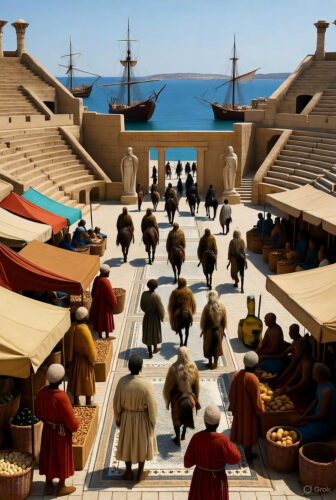
A practical plan to apply this:
- **Assess Your ‘Empire’ (Week 1)**: Evaluate life areas like the Romans did Africa—career, health, relationships. Identify ‘vulnerable gates’ (weaknesses) and ‘grain supplies’ (strengths).
- **Plan Your ‘Migration’ (Weeks 2-3)**: Set goals inspired by Vandal journeys. For career shift, research industries, network (ally-building), and prepare skills (fleet-building).
- **Execute with Timing (Week 4)**: Wait for opportunity, then strike—like job applications during hiring seasons or launching a side hustle when prepared.
- **Consolidate Gains (Ongoing)**: Once achieved, fortify like Carthage under Vandals—continuous learning, diversify income, nurture alliances.
- **Reflect and Adapt (Monthly)**: Review progress, adjust for ‘plagues’ (obstacles), celebrating wins to stay motivated.
By channeling the Vandals’ spirit, transform obstacles into conquests. History isn’t just past—it’s your playbook for victory.

